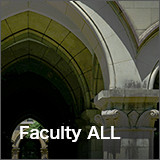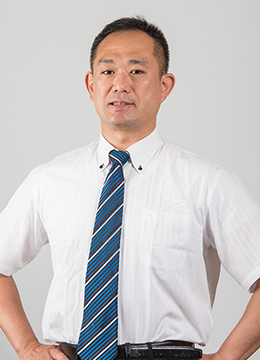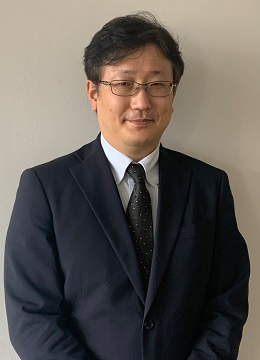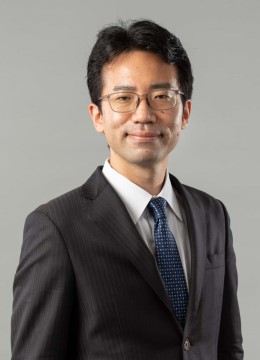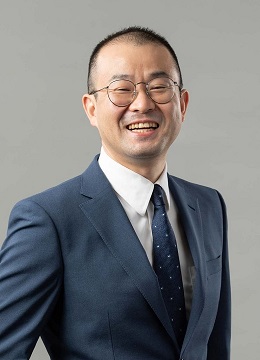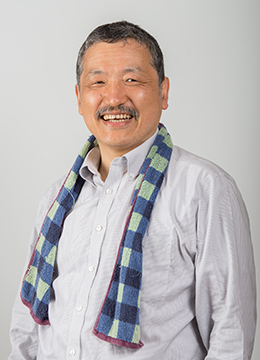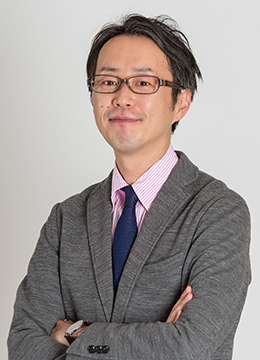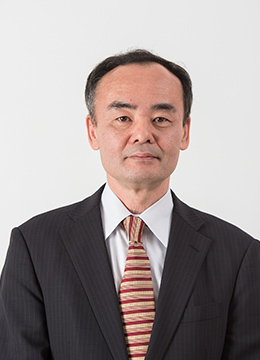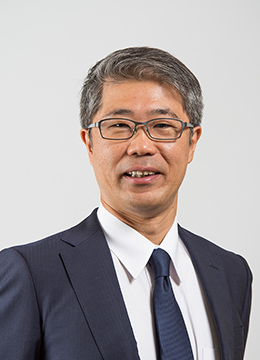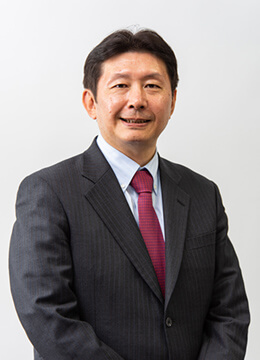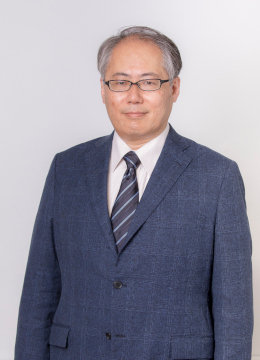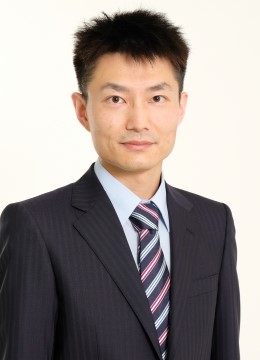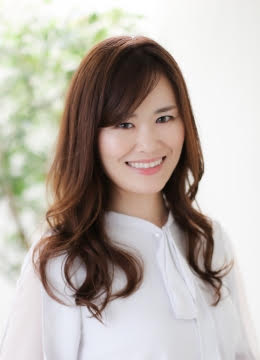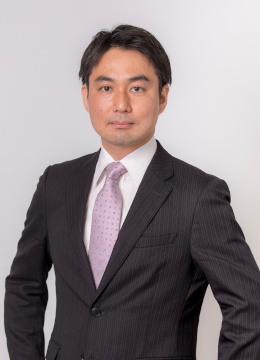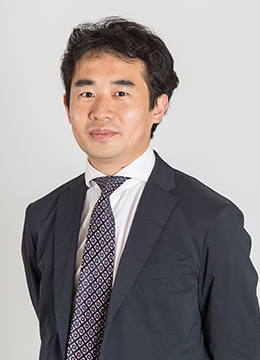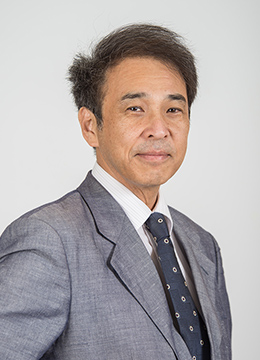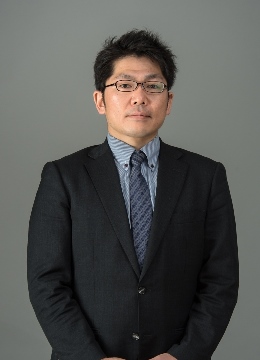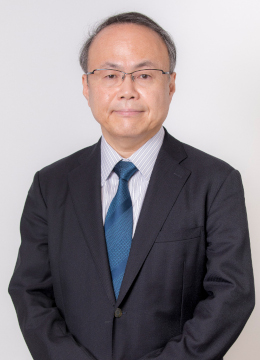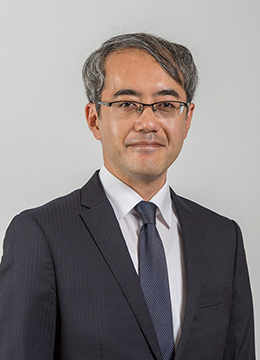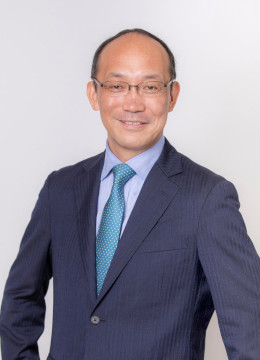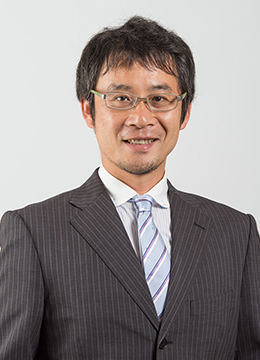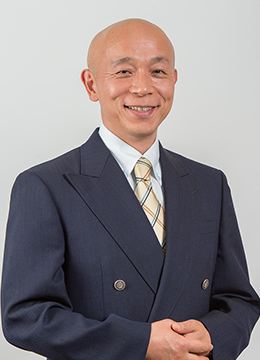- HOME
- Faculty member
Nuclear Reactor Safety
Nuclear
Reactor
Safety
Abnormality Detection Technology
Development of Plant Safety, Security, Maintenance for NPP and Medical Imaging Technology:
1) Hand and Body Motion Recognition using Fish-eye camera for NPP Safety and Security,
2) Failure Sign Detection of Devices for Predictive Maintenance,
3) Madical Imating Technology for Real-time Tracking Radiation Therapy (RTRT.)
Department/Institute/Research Center
Main post:Department Nuclear Engineering and Management
Other posts:Nuclear Professional School
Keywords
Maintenance, Medical Technology, Movie Prediction
Nuclear
Reactor
Safety
The safety associated with long-term operated nuclear reactors
Materials and welding are important for manufacturing, and appropriate maintenance and management to ensure the safety of nuclear facilities and components.
In order to ensure the safety of light water reactors which has been operated for long term, we are researching methods for predicting the material degradation of reactor pressure vessels and nuclear piping, which are the most important safety-related components composed of the pressure boundary, through deeper understanding the degradation mechanisms and so on. Additionally, we are conducting research and development to accurately evaluate weld residual stress, which is important for assessing the structural integrity of nuclear components, taking material variations caused by welding into account. Moreover, we are developing a probabilistic evaluation method that integrates the above technologies with the aim of risk-based decision-making related to maintenance and management, and proceeding practical applications of the probabilistic evaluation method.
The accident of Fukushima Daiichi Nuclear Power Plants provided an opportunity to refocus the importance to assess failure behavior of reactor components with complicated geometry due to relocation of fuel materials, and to assess the safety of reactor system considering their failure behavior.
We are proceeding research and development on evaluation methods related to above topics in collaboration with the Japan Atomic Energy Agency.
Department/Institute/Research Center
Main post:Japan Atomic Energy Agency (JAEA)
Other posts:Department Nuclear Engineering and Management
Keywords
Material, Welding, Ageing degradation, Probabilistic structural integrity assessment, Nuclear safety
Nuclear
Reactor
Safety
Engineering Innovation through Multiphase Flow
Multiphase flow, which consists of two or more phases with different physical properties, is a phenomenon that occurs in various engineering disciplines at variety of spatio-temporal scales. In particular, understanding of gas-liquid two-phase flows is crucial to ensure safe and efficient operation of energy and chemical systems including next-generation nuclear reactors, heat exchanging devices, fuel transportation systems, and so on. Our laboratory aims to develop innovative thermal-hydraulic models for next-generation engineering systems through mechanistic and data-driven approaches. We are actively promoting research collaboration with both domestic and International groups, as well as collaborative research projects with various industrial domains ranging from plant manufacturing to utility and consulting companies.
Department/Institute/Research Center
Main post:Nuclear Professional School
Other posts:Department Nuclear Engineering and Management
Keywords
Nuclear system safety, Thermal-hydraulics, Multiphase flow, Gas-liquid two-phase flow, AI (Machine Learning/ Deep Learning)
Nuclear
Reactor
Safety
Safety Management to cope with unexperienced behavior of complex systems
To realize reliable nuclear energy systems, we are engaged in research on safety management and nuclear materials.
Safety management throughout the whole plant life cycle is studied for existing light water reactor systems. (Keywords: Risk Informed Decision Making, Long-term Operation, Obsolescence Management)
Providing highly reliable nuclear materials by elucidating complex phenomena caused by the interaction of radiation and materials using innovative experimental methods. (Keywords: Radiation Damage, Reactor Pressure Vessels, Nuclear Concrete, Ion Accelerator, In-situ TEM, High Entropy Alloy)
Department/Institute/Research Center
Main post:Resilience Engineering Research Center
Other posts:Department Nuclear Engineering and Management
Keywords
integrated risk-informed decision making, in-situ observation, irradiation design, safety, materials
Nuclear
Reactor
Safety
Visualization and Nuclear Safety
"Visualization" is the key technology on 21 century. We focused on the Information Visualization and Quantitative Visualization. The huge amount of data will be visualized to understand the complex phenomena and/or to resolve the core mechanism of the complex systems. The laser and high-speed camera will resolve the invisible world with quantitative information. We are the world top class laboratory for quantitative visualization.
In the Nuclear Safety, visualization is also the key system. The complex huge system, e.g. Nuclear Power Plant, will be resolved using the visualization technology. The Nuclear Energy will be a promising source of energy to help the world, especially developing countries. However, public understandings will be needed, especially in Japan. Using the visualization technology, we will provide an open access of the Nuclear Energy.
We really need a trailblazer for the complex future.
Department/Institute/Research Center
Main post:Nuclear Professional School
Other posts:Department Nuclear Engineering and Management、Director, JAEA Collaborative Laboratories for Advanced Decommissioning Science
Keywords
Visualization, Nuclear safety, Severe accident
Nuclear
Reactor
Safety
Chemistry for Nuclear Waste Disposal and Environmental Behaviors of Radionuclides
It is duty of our generation to settle the issues of nuclear waste disposal. Geological disposal is a feasible option for high-level wastes or spent fuels, where various basic research and R&D are still needed to improve the reliability. Chemistry of radionuclides is a key foundation to realize a well-accepted disposal system. Thus, we are pursuing understanding and modeling of the chemistry that governs the interaction of radionuclides with materials of engineering barriers and the migration of radionuclides in subsurface environments, using sophisticated spectroscopy with X-ray, laser, and neutron, chromatographic techniques, and computer simulation. Knowledge obtained through the research has been applied to the modeling of chemodynamics of radionuclides released from the accident of the Fukushima Daiichi nuclear power plant or other non-radioactive pollutants in environments. Any student who has an interest in the issue of nuclear waste disposal are welcomed, no matter what academic backgrounds they have.
Department/Institute/Research Center
Main post:Nuclear Professional School
Other posts:Department Nuclear Engineering and Management
Keywords
Nuclear waste disposal, Physical chemistry, Geochemistry, Actinide chemistry
Nuclear
Reactor
Safety
Deepening of Risk and Utilizing of Risk on Decision Making in Engineering Issue
We have no engineering system with absolute safety. Accordingly, A qualitative and quantitative understanding of risk on the system will be one of the most key issues to discuss its safety and to make a decision concerning with an application of the system.,
Since a nuclear power plant is a huge and complex engineering system, intrinsic risks in the plant include large uncertainties and numerous scenarios. Hence, a ratiocinative methodology will be of importance to clarify the risks. We have been developing the methodology based on experimental approaches as well as numerical simulation technology.
We have also investigated a qualitative characteristic of the information concerning with the risk, which is obtained in the risk assessment, and its elemental role on decision making so as to enhance development of human resources who has accomplishment of utilizing risk information on decision making reasonably.
Department/Institute/Research Center
Main post:Risk engineering course
Other posts:Department Nuclear Engineering and Management
Keywords
Risk assessment, Thermal-hydraulics, Numerical simulation, Uncertainty, Decision making, Nuclear safety
Radiation Sources , Detection & Measurement
Radiation
Sources ,
Detection &
Measurement
Laser photons controlling isotopic atoms to manipulate physical and chemical reactions for isotope engineering
Recent progress has been made in engineering solid state lasers to extend their wavelengths and intensities, which leads less photon-cost and narrower bandwidth of the laser wavelength. Laser manipulation of atoms and molecules is one of the fruitful fields due to it. In nuclear engineering, the isotope manipulation and measurement are fundamental technology to pursue. Measurement of rare isotopes is also important for nuclear security or forensic science. We investigate interactions between photons and atoms to extend capability of the laser manipulation for nuclear engineering.
Department/Institute/Research Center
Main post:Nuclear Professional School
Other posts:Department Nuclear Engineering and Management
Keywords
laser science, Atomic and molecular science, Isotope engineering
Radiation
Sources ,
Detection &
Measurement
Attosecond Science and Particle Cancer Therapy
We study the interaction of a laser pulse and an ion beam with matter through theory and simulations. Our research interest is a new field called high-field phenomena and attosecond science, which studies the quantum dynamics in an ultrashort intense laser field. Especially, we investigate highly nonlinear processes such as high-harmonic generation and tunneling ionization as well as attosecond electron dynamics in atoms and molecules, based on atomic and plasma physics as well as quantum chemistry. Also, we develop a sophisticated method of dose calculation for heavy-ion cancer therapy, which also runs on the K supercomputer.
Department/Institute/Research Center
Main post:Department Nuclear Engineering and Management
Other posts:Photon Science Center、Department of Physics, School of Science
Keywords
High-order harmonic generation, High-field physics, Ab initio simulations, Monte-Carlo method
Radiation
Sources ,
Detection &
Measurement
AMS, Isotope System, Earth Environmental System
Accelerator Mass Spectrometry (AMS) can analyze extremely rare long-lived radio isotopes such as 10Be(half life = 1.36x106 yr), 14C(5,730 yr), 26Al(7.2x105 yr),36Cl(3.01x105 yr), 129I(1.57x107 yr). These rare isotopes form special isotope systems with their stable isotopes which have precise information about earth environment system. Most famous isotope system is the 14C/12C system well known to be used for dating. Our laboratory has a 5MV tandem accelerator and developed multi-nuclide AMS system of which the performance retains world's top level. While we are applying AMS to various interdisciplinary research fields from archaeological to earth environmental sciences, recently we especially focus on the 129I/127I system. As iodine has a close relation with organic matter and is often found with important carbon reservoir such as methane hydrates and soils, we consider 129I/127I system is an important clue to elucidate the total carbon dynamics.
Department/Institute/Research Center
Main post:The University Museum
Other posts:Department Nuclear Engineering and Management
Keywords
Ion beam, AMS, Isotope geochemistry, Radioisotope environment assessment
Radiation
Sources ,
Detection &
Measurement
Attosecond Electron-beam Imaging
We are developing novel imaging techniques to visualize ultrafast phenomena occurring on the atomic scale. We use ultrashort electron beams and ultrashort pulsed lasers. By developing an attosecond electron microscope, we will visualize ultrafast phenomena with Angstrom resolution, for example, the ultrafast motion of electrons in an initial step of a chemical reaction. Our research activities range from theoretical studies on electron beam generation and its scattering, design of electron guns, electrodes, and electromagnetic lenses using simulation software, design and development of ultra-high vacuum devices, observation of ultrafast phenomena using ultrashort electron beams, development of novel light sources with various wavelengths using intense femtosecond lasers, and manipulation of electron beams by light waves. Our research is conducted at RIKEN in Wako, Saitama.
Department/Institute/Research Center
Main post:Institute of Physical and Chemical Research (RIKEN)
Other posts:Department Nuclear Engineering and Management
Keywords
Electron Microscopy, Ultrashort laser, Physical chemistry, Light-matter interaction
Radiation
Sources ,
Detection &
Measurement
Shape modeling for empowering applications of X-ray CT measurements
Industrial X-ray CT scanning has been introduced primarily in the manufacturing industry as a non-destructive internal measurement technology. The applications of CT measurement are expanding beyond the mere acquisition of object geometry, as exemplified by the digital twin. This shows that CT scanning has value more than just shape measurement. However, measurement data is subject to various disturbances, thus it is necessary to improve its accuracy and image quality to make the best use of it.
We believe that algorithms to improve the quality and use of measurement data can enhance the value of the measurement data, and we have been developing geometry processing algorithms for data obtained from substantial objects by measurement technologies such as X-ray CT scanning. In addition, to elucidate the influence of objects on human sensation and perception, we aim to develop sensory modeling technologies by linking measurement data with quantitative sensory data.
Our specific research topics include X-ray projection image improvement, high-quality CT reconstruction, accurate shape extraction, visualization, shape analysis, and shape generation. During the course, students develop algorithms, implement them, and verify their performance. Our algorithms are based on various fields such as the principles of X-ray CT scanning, shape modeling, computational geometry, differential geometry, and optimization.
Our mission is to provide valuable technologies and people for the betterment of society. We are willing to work with students who share this idea of contributing to society and are curious to explore new research fields.
Department/Institute/Research Center
Main post:Research into Artifacts, Center for Engineering
Other post:Department of Nuclear Engineering and Management
Keywords
Scanned data processing, Shape modeling, Computational geometry, Programming
Radiation
Sources ,
Detection &
Measurement
Light/Quantum beam science and applications
Light/quantum beam is widely used in society. Lasers as light are probably installed in the PC or smartphone you are looking at on your screen right now, while radiation as quantum beams supports social activities such as medical care and infrastructure diagnosis, and synchrotron radiation obtained from quantum beams is used to develop various new products. Light and quantum beams may seem to be two different fields, but in semiconductor manufacturing, for example, the wavelength of exposure light is becoming shorter, and EUV (extreme ultraviolet light: wavelength of 13.5 nm) is beginning to be used. This is an area that can already be called radiation. The two fields is expected to get closer. To develop this new combined field, we will expand the application by pioneering new light and quantum beam sources through lasers, accelerators, their fusion, and by miniaturizing accelerators. Recently, we have also been working on applications to laser processing.
Our laboratory has just started up, and we will design and build research devices using lasers and accelerators. You can learn a wide range of fields such as accelerator science/optical science/vacuum technology/materials science/optical and quantum beam applications. Let us enjoy this chance to build systems filled with your own ideas together.
Department/Institute/Research Center
Main post:Nuclear Professional School (Arrive on July)
Other posts:Department Nuclear Engineering and Management
Keywords
Light/Quantum beam, Accelerator, Laser, Quantum beam application, Laser processing
Radiation
Sources ,
Detection &
Measurement
Quantum Sensing and Instrumentation for Radiation Science
We develop novel quantum sensing and instrumentation for medical physics, environmental applications and nuclear science, which visualizes unknown phenomenon and information.
X-ray low-dose photon counting CT, next generation PET (positron emission tomography) and Compton imaging, radio-theranostics technology with new radioisotopes, X-ray and neutron imaging and analysis, radiation detectors for decommissioning and monitoring, research on atomic nucleus and radiation generation, new measurement method based on quantum entanglement, photon-radiation integrated technology with nanoparticles (quantum dot) are one of our research topics. We build new radiation science and medical diagnosis and therapy utilizing atom and atomic nucleus. We welcome ambitious students interested in those fields to work together.
Department/Institute/Research Center
Main post:Department of Nuclear Engineering and Management
Other post:Department of Bioengineering
Keywords
Quantum Imaging, Quantum measurement, Quantum sensor, Radiation Detection and Measurement, X-ray and Neutron Imaging, Medical Diagnosis and Therapy
Radiation
Sources ,
Detection &
Measurement
Radiation Measurements and Instrumentation
Radiation measurements are very important in many science and technology areas. We develop quantum radiation detectors for various applications in many areas such as medical imaging, industrial imaging, basic science, etc. Microfabrication techniques, microelectronics and computer hardware techniques, and simulation calculations are effectively used in our research.
Department/Institute/Research Center
Main post:Institute of Engineering Innovation
Other posts:Department Nuclear Engineering and Management、Department of Bioengineering
Keywords
Radiation measurements, Gamma-ray imaging, Environmental radiation, Neutron detectors, Signal processing
Radiation
Sources ,
Detection &
Measurement
What are induced by ionizing radiations? Utilization of advantages and overcome of disadvantages.
Ionizing radiations are closely related to most of the problems in nuclear engineering while they are utilized in practical fields such as cancer treatment in medical field, material processing in industrial field, etc. Understanding their features is essential in order to enhance their advantages as well as to overcome their disadvantages. Sequential events from pico- to microseconds (10−12-10−6 s)) induced by ionizing radiations are all our interest. Examples of research subjects are as follows: "Mechanism of radiation protection and enhancement caused by a tiny amount of chemicals", "water radiolysis (radiation-induced decomposition) with therapeutic high-energy heavy-ion beams", "radiation chemistry in gel matrix for development of polymer gel dosimeter", "effect of seawater constituents on water radiolysis", "gas evolutions from boiling water", etc. In addition, radiation effects at interfaces such as water-polymer (DNA, polysaccharides), water-metal/ceramic, and liquid water-water vapor have not been investigated well. I hope some students make breakthroughs in the frontier.
Department/Institute/Research Center
Main post:Nuclear Professional School
Other posts:Department Nuclear Engineering and Management
Keywords
Radiation effect (physical chemistry, chemistry, and biochemistry), water chemistry in nuclear engineering, cancer therapy, industrial application of radiation, interfaces
Advanced Modeling & Simulation
Advanced
Modeling &
Simulation
Energy Systems Analysis for Policy and Technology Assessment
Fujii laboratory has been working on the research topics of the feasibility analysis of various alternative energy supply technologies, and policy evaluation for international energy security and environmental issues using a global energy system model built with large-scale mathematical programming on the computers. Moreover, research topics of energy management, such as institutional design of deregulated electricity markets and optimal strategy planning of energy procurement under uncertainty, have also been investigated using variety of analytical techniques of stochastic dynamic programming, financial engineering, and multi-agent simulation with reinforcement learning.
In Fujii laboratory, since we try to find the solutions for the energy problems of 100 years and for the social system which is not realized yet, we welcome students who have the interest to learn various fields, and those who have strong imagination to consider the future of foreign countries.
Department/Institute/Research Center
Main post:Department Nuclear Engineering and Management
Other posts:Resilience Engineering Research Center
Keywords
Energy Economic Systems, Technology and Policy Assessment, Optimization, Stochastic Programming
Advanced
Modeling &
Simulation
Quantitative Analysis of Energy Security
Energy security is a key agenda to address for sustaining socioeconomic activities under various structural and contingency risks such as the depletion of fossil fuel and energy supply disruption. In order to formulate effective technical and political measures for enhancing energy security under those risks and constraints, we need to comprehensively understand economics and international energy market as well as the engineering aspect of energy technology. The research theme in our group is to develop a mathematical and computational energy-economic model to analyze the optimal strategy for the deployment of energy technologies and to discuss energy policy firmly based on the simulated results derived from the model.
Department/Institute/Research Center
Main post:Department Nuclear Engineering and Management
Other posts:Resilience Engineering Research Center(講義)
Keywords
Energy security, Energy-economic model, Mathematical optimization, Econometrics
Advanced
Modeling &
Simulation
Multiphysics modeling for computational granular dynamics
We study multiphysics modeling for computational granular dynamics, namely, numerical simulations of solid-fluid and solid particle-elastic body interaction problems. We encounter these problems in various fields including nuclear engineering, chemical engineering, mechanical engineering, civil engineering, pharmaceutical, etc. Numerical studies on the problems were challenging since these were hardly simulated because of the complicated phenomena and excessive calculation cost. Accordingly, our research topics becomes wide ranging, for example, slurry suspension, magneto-rheological fluids, fluidized beds, debris flows, slope failure. At present, we develop new models to perform the simulations by using Lagrangian-Lagrangian or Eulerian-Lagrangian approaches. Our original technologies become important in engineering and science.
Department/Institute/Research Center
Main post:Resilience Engineering Research Center
Other posts:Department Nuclear Engineering and Management、Imperial College London (Visiting Associate Professor)
Keywords
Computational granular dynamics, Discrete element method, Multiphiscs modeling
Advanced
Modeling &
Simulation
Multielectron dynamics in intense laser fields
High field physics and attosecond science are rapidly progressing, in which dynamics of electrons in matters are directly measured and even controlled, using ultra-short high-intensity laser pulses. We are developing state-of-the-art theoretical and computational methods to solve time-dependent Schrödinger equation of multielectron systems interacting with intense laser fields, aiming at ab initio study of nonlinearly nonperturbative phenomena such as tunneling ionization, high harmonic generation, and nonsequential multiple ionization.
Department/Institute/Research Center
Main post:Department Nuclear Engineering and Management
Other posts:Photon Science Center
Keywords
High field physics, Attosecond science, Wave function theory, Density functional theory, Quantum chemistry
Materials in Extreme Environments
Materials in
Extreme
Environments
Nuclear Materials Engineering
As one of the expected solutions for the safe design and operation of nuclear power plants, the further improvements of nuclear materials and fuels are indispensable. We deal with research and development of materials for fusion reactors, advanced fission reactors (Generation IV), and current light water reactors (LWR). The main aspects are to reveal fundamental mechanism of the degradation process under extreme environments, such as irradiation, corrosion and hydrogenation, in Fe-based and Zr-based alloys. Developments of high-performance materials and testing methods are also of our interest. The following techniques are currently applied: microscopy like TEM, HVEM, TEM-accelerator, SEM/EBSD etc.; mechanical tests like advanced expansion-due-to-compression (A-EDC) test, tensile, creep and nano-hardness etc.; and computer simulations like FEM and MD.
Department/Institute/Research Center
Main post:Nuclear Professional School
Other posts:Department Nuclear Engineering and Management
Keywords
Fission, Fusion, Nuclear materials, Nuclear fuels, Extreme environment, Degradation mechanism, Radiation effects


